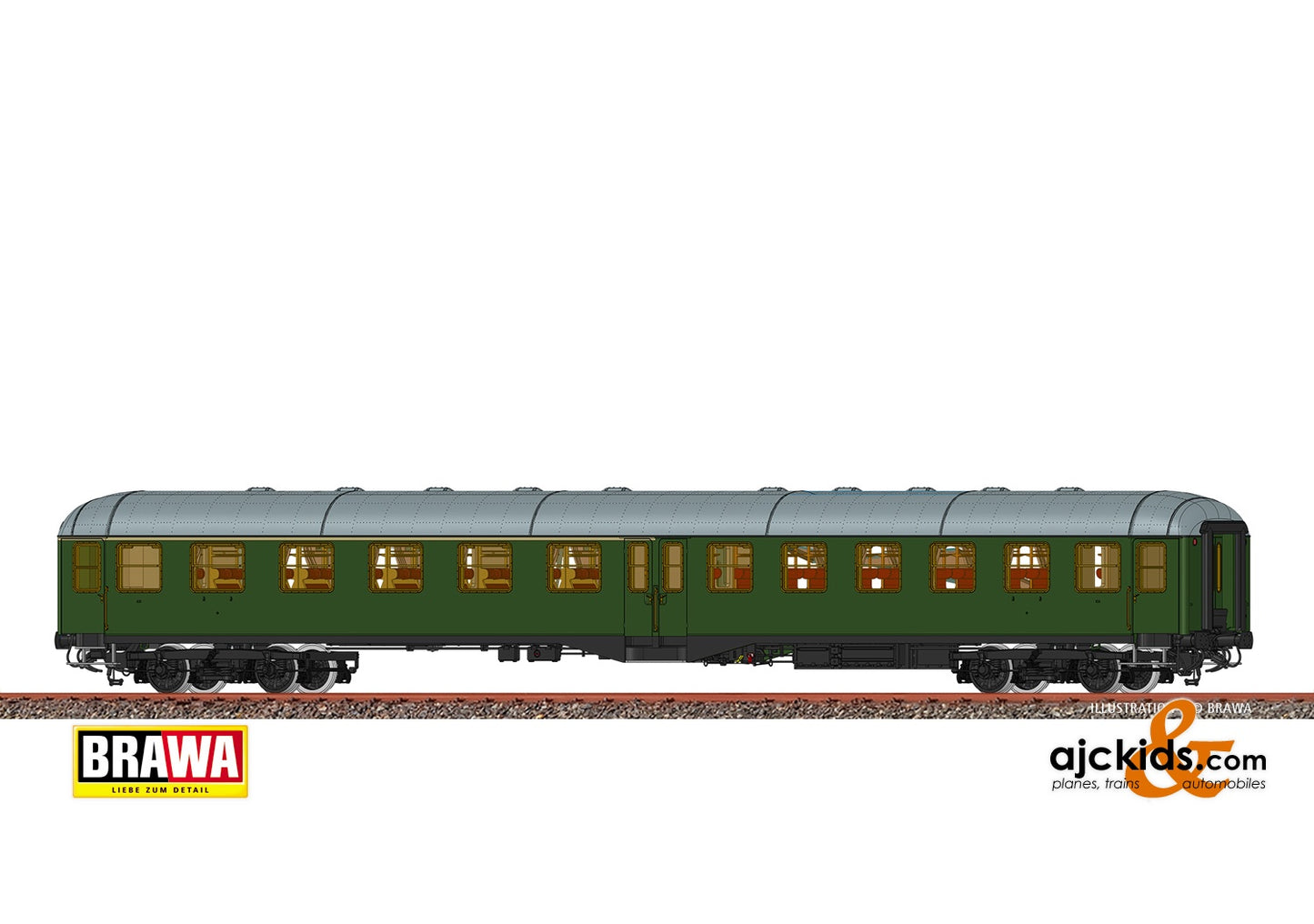Brawa 58028 - H0 Passenger Car ABymb 411 DB IV AC B+ LED
MODEL DETAILS
- Scale replica of the windows
- Type 094/096 wheelsets with wheel disks corrugated on both sides
- Interior furnishing appropriate to the era
- Interior lighting prepared or installed
- Spring-loaded rubber bead at the transition
- Close coupling kinematics
- Execution of the riveted roofs and overlapping roof sheets
- Alternator attached to the bogie
- Fine printing and painting
- Extra attached steps
- Free standing grab bars
INFORMATION ABOUT THE MODEL
The 26.4 m long express train wagons were introduced before the express train wagons of the same length. Around 1950, the DB, together with a number of wagon factories, under the management of the Wegmann company, began developing new four-axle passenger wagons for regional and long-distance traffic. After the construction of three 26.4 m long test carriages, with middle and end entrances, the decision was finally made in favor of this type of construction. At the end of 1951 the first order for 500 of these wagons was placed with 15 wagon construction companies. In the following years further orders for 245 pieces were added, the delivery of which dragged on until the beginning of 1955. The two basic types were the mixed-class AB and single-class B cars. From the last-named type, various push-pull control cars and, for traffic-related reasons, cars with luggage and dining areas were developed to meet requirements for train conveyance.
The running gear (bogie, type Minden / Deutz) and the structural design are basically the same for all types. Underframe and box frame are a welded profile steel construction. Special consideration was given to sound and heat insulation, the cost of which - according to the use of the wagons in district traffic - had to be kept within moderate limits. Walls and underframe were lined with rock wool, the roof with spray insulation (made of asbestos flakes). Apart from two types, the carriages are divided into two large passenger areas of different lengths by the central entrances that are not exactly in the middle of the car. The middle entrances have two relatively narrow revolving doors and a central column, while the end entrances with their wide revolving doors, the pivot point of which is moved inwards, and the somewhat more favorable arrangement of the steps allow easy entry and exit. The front wall closure is formed by multi-part folding doors which, when closed, protrude into the anteroom in the form of a box to keep the Bern area free.
The seating arrangement in the large passenger areas is 1 + 2 in the upper class and 2 + 2 in the lower class. The toilets at the ends of the wagons protrude into the large vestibules. The interior of the car is relatively simple, but still dignified. In 1st class, the walls and the frames of the upholstered seats are clad with fine wood veneer. In the 2nd class the wall surfaces have a plastic wallpaper. The upholstery of the 1st class corresponds to the normal version of the DB. The 2nd class has upholstered double seats covered with synthetic leather. The luggage racks in both classes are made of thin-walled, high-strength steel tubes and are coated with stove-enamel (nickel silver).
A high-pressure heater is installed as the heater, which can be finely regulated by opening and closing thermally insulating flaps. The main steam line under the car, which was previously common, has been omitted. In addition to the steam heating, a normal electric heater for 1000 volts is installed, the resistance heating elements of which are arranged under the seats so that the floor remains free.
In view of the importance of the train turning operation in the context of the structural change of the train transport service as well as the relief of highly stressed (end) stations, all express train cars were intended for this use. The subsequent installation of additional equipment, such as control lines and main container air line (8 atmospheres), has been structurally prepared. 118 cars have been given driver's cabs. However, for the time being only a part of these wagons and the associated cable wagons, with complete facilities for operation with remote control, were set up.
The driver's cabs located at one end of the car are completely the same for the three types of push-pull control car. From the operational requirement to be able to use these cars freely like normal cars, a car head with transition was created. The layout of the driver's cab and the driver's compartment in the head of the car can be seen on both sides of the central passage. Two revolving doors with window panes are arranged in such a way that one forms the front wall closure to the outside when used as a control car or serves as closure of the driver's compartment in ordinary trains. The other door closes the head of the car from the inside or just the driver's cab. This sensible arrangement of the doors enables a free transition from car to car if necessary.
EAN/UPC: 4012278580289



